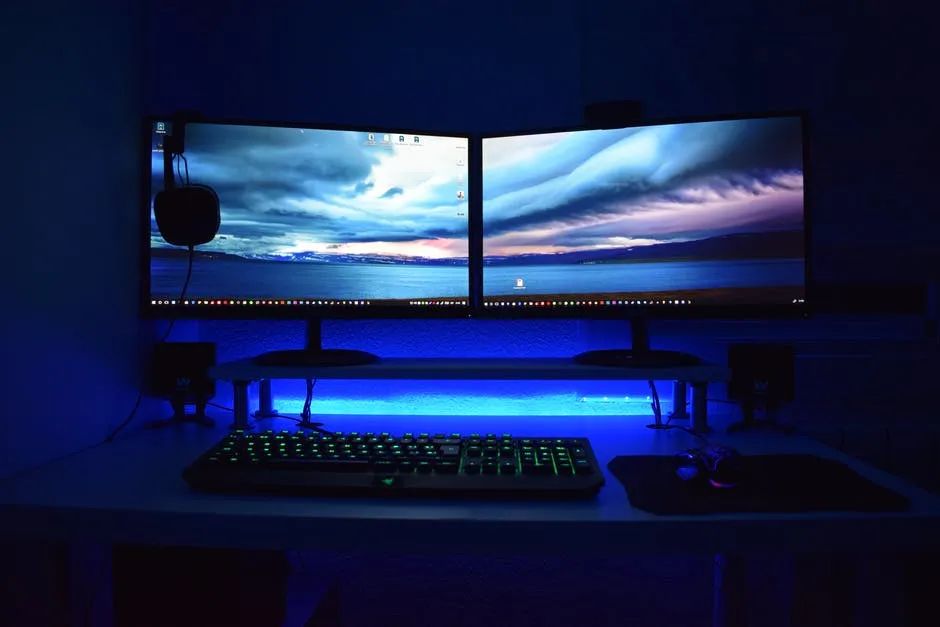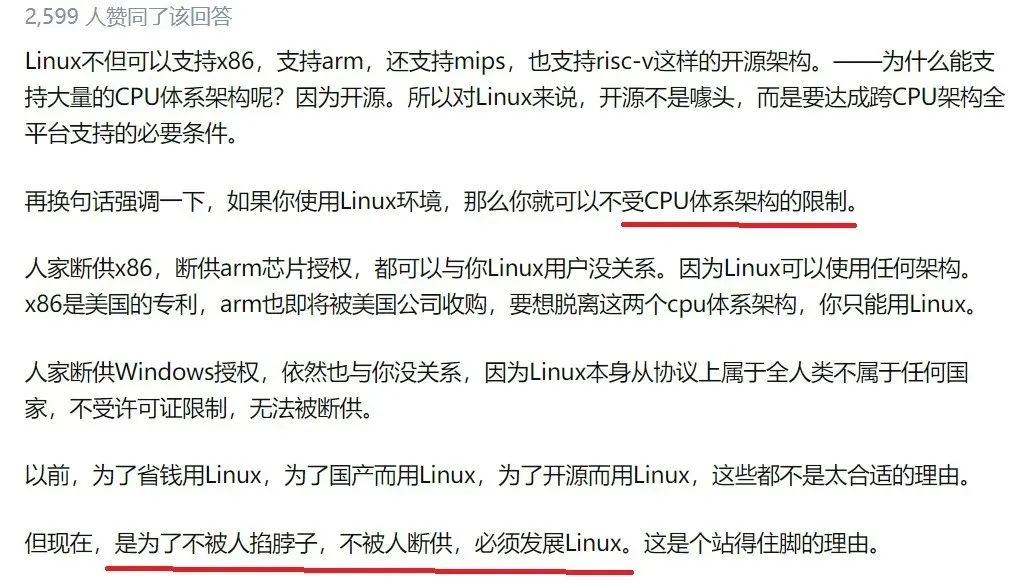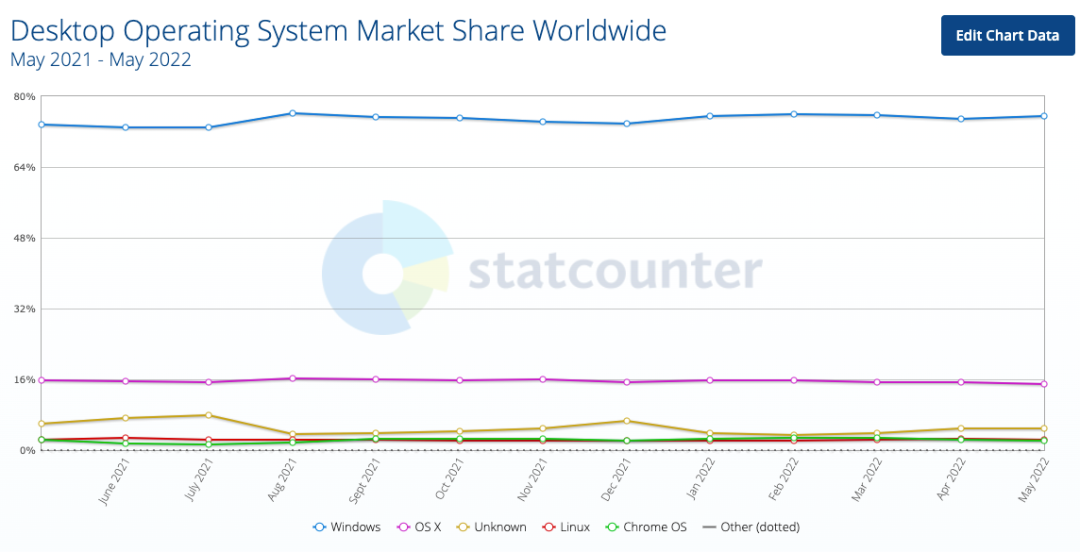” , with millions of developers

Source丨51CTO technology stack (ID: blog51cto)
Reviewers: Yun Zhao, Qianshan
Reprinted with the authorization of the original official account
Recently, on Zhihu, "Why should all corporate computers such as state-owned enterprises be replaced with Linux environments?" has become a hot topic.

Image source @zhihu
Roughly browsed the comment area, and many people discussed it from the perspective of "stuck neck".

This angle of course makes sense, but we might as well put aside international factors and only look at the operating system itself, why Linux has such a low market share in the operating system (according to statistics, Linux has less than 5% of the global desktop operating system market share), Everyone is still obsessed with the Linux operating system.

Global desktop operating system share statistics table, picture source@network
The beginning of the Linux family
Linux was originally written as a hobby by Linus Torvalds, and the first version was released in September 1991 with just 10,000 lines of code.
Of course, technically, Linus only developed the Linux kernel, and although the kernel is the core of the operating system, it is not a complete operating system. Therefore, some organizations or manufacturers package the Linux kernel with various software and documents, and provide a system installation interface and system configuration, setting and management tools, which constitute a Linux distribution.
In the development process of the Linux kernel, various Linux distributions have played a huge role, and it is they that promote the application of Linux, so that more people start to pay attention to Linux.
Linux distributions can be roughly divided into two categories: one is the distribution maintained by commercial companies; the other is the distribution maintained by community organizations. The former is represented by the famous Red Hat, and the latter is represented by Debian.
In China, the most widely used Linux distributions mainly include the following four.
Red Hat (Red Hat) is the world's most senior Linux vendor (already established for nearly 30 years) and the most recognized Linux brand. Red Hat's products mainly include RHEL (Red Hat Enterprise Linux, paid version) and CentOS (community clone version of RHEL, free version), Fedora Core (developed from Red Hat desktop version, free version).
At present, Red Hat is the most popular Linux version in China. Most of the domestic Linux tutorials are explained by taking Red Hat as an example.
Ubuntu is developed based on the well-known Debian Linux. It is easy to use and has comprehensive hardware support. It is currently the most suitable Linux distribution for desktop systems, and all distributions of Ubuntu are provided for free.
SUSE Linux is based on Slackware Linux. It was originally a Linux version released by SUSE Linux AG in Germany. The first version was released in 1994. In the early days, there was only a commercial version. After being acquired by Novell in 2004, the OpenSUSE community was established and launched its own The community version of OpenSUSE.
SuSE Linux is more popular in Europe and has more applications in China. One possible reason is that it has absorbed many characteristics of Red Hat Linux. In comparison, the interaction between SUSE Linux and Windows is relatively easy to achieve.
Gentoo was originally created by Daniel Robbins (one of the developers of FreeBSD), and the first stable version was released in 2002. Gentoo is the most complicated to install of all Linux distributions, and so far it still uses source code packages to compile and install the operating system. However, it is the most manageable version after installation and the fastest version to run on the same hardware.
Gentoo's high degree of customization makes Gentoo more suitable for veterans with Linux experience.
In general, Linux and earlier UNIX operating systems have a lot in common, but most of the UNIX operating systems are matched with hardware, that is to say, most UNIX systems such as AIX, HP-UX, etc. cannot be installed in x86 servers and personal computers, while Linux can run on a variety of hardware platforms.
Also, UNIX is commercial software, while Linux is open source software.
With the functions of UNIX and open source, these two characteristics make Linux popular among programmers.
The "favored" Linux desktop system
Although open source is an important reason for the popularity of the Linux desktop system, it does not explain why governments in various countries have a "preferential" preference for the Linux desktop system: Linux is not the only open source desktop operating system. For example, FreeBSD is also an open source desktop operating system. But governments' attention seems to be on Linux.
For example, in 2004, when the Munich government in Germany was looking for an operating system to replace Windows, it chose Linux (of course, 10 years later, the Munich government in Germany switched back to Windows, which is a later story); in May 2019, South Korea announced that it will follow With the end of the Windows
7 life cycle, all government computers in South Korea will switch from Windows to Linux; in 2020, a number of Polish government departments have reached cooperation with Linux Polska (Polish open source and data science technology service provider); as for domestic , Most of the domestic operating systems are developed based on Linux.
Why Linux has become the "darling" of many governments?
The reason is probably related to the mature enough performance of Linux. Specifically, there are the following points.
1. Plenty of available software and freeware
Although the software of Linux in office applications and games and entertainment is still relatively scarce compared to the Windows system, compared with other open source operating systems (such as FreeBSD), the software ecosystem on the Linux system is rich, such as Apache, Samba, PHP, MySQL, etc., and most of these softwares are free and have low construction costs. This is one of the reasons why Linux is favored by many enterprises and institutions.
2. Good portability and flexibility
Linux system has good portability, it supports almost all CPU platforms, which makes it easy to tailor and customize. We can put Linux in storage media such as U disk, CD-ROM, etc., or it can be widely used in the embedded field.
3. Excellent stability and security
Famous hacker Eric S. Raymond once said: "Enough eyes can make all problems come to the surface." Linux is open source, and programmers all over the world can see what is wrong. and vulnerabilities, which are quickly discovered, making it stable and secure.
In addition, compared with Windows, due to the large market share of Windows, which makes it the main target of the attack, and because of the small share of Linux, people who create computer viruses and spyware are "too lazy" to attack it. It also makes Linux more secure.
4. Support almost all network protocols and development languages
Linux is a kind of UNIX, and the UNIX system was developed together with the C language and the TCP/IP protocol. Today's mainstream languages, such as PHP, Java, C++ and other programming languages, are derived from the C language. Network protocols and development languages are well supported.
To sum up, although Linux still has shortcomings such as the need to improve desktop application software and the lack of uniformity in Linux specifications, it is qualified as a desktop operating system and is enough to be an alternative.
At present, the Linux desktop system environment has been promoted and popularized by the government in many countries because of its universality, maturity, controllability and transparency. It is difficult, after all, no company or institution has treated the Linux desktop operating system as a mass product.
However, this does not prevent us from giving more attention to the Linux desktop system. "Thirty years of Hedong, thirty years of Hexi", products that were once popular may end up disappearing (such as IE browsers), and products that were once niche also usher in the day when spring flowers bloom. Keep an open mind in order to See the surprises that time brings.
<END>
Programmer exclusive T-shirt
Product direct purchase link👇
![]() Script house carefully selected , transaction guarantee , buy with confidence , programmer geek short-sleeved T-shirt
Script house carefully selected , transaction guarantee , buy with confidence , programmer geek short-sleeved T-shirt ![]() Mini Program
Mini Program

Recommended reading:
This is a T-shirt that only programmers understand
After 37 years, Windows 11 replaces the system default terminal
The interns recruited by 7K, the mysterious past company behind Linux memory , don't know how to find files in Linux!
How to use the vmstat command under Linux




Script house carefully selected , transaction guarantee , buy with confidence , programmer geek short-sleeved T-shirt
Mini Program